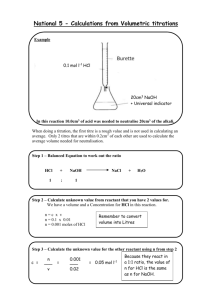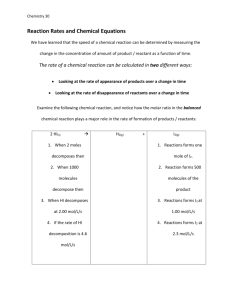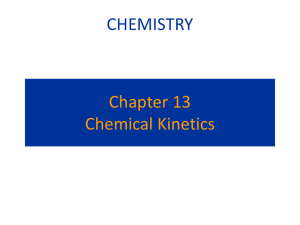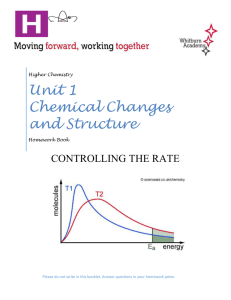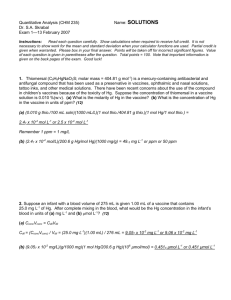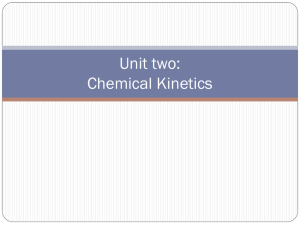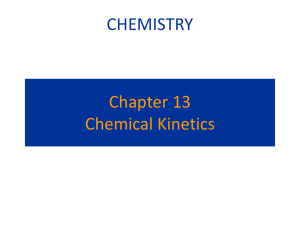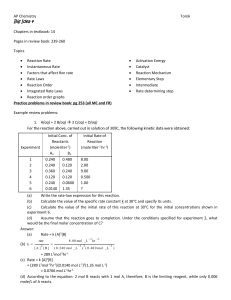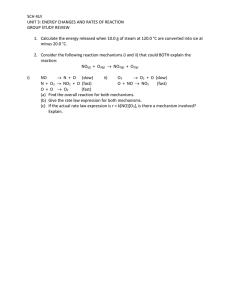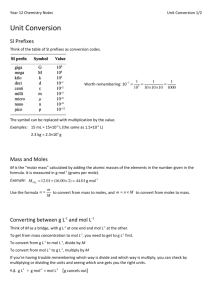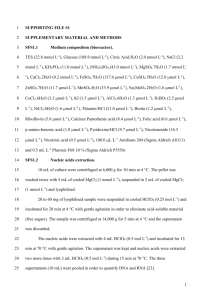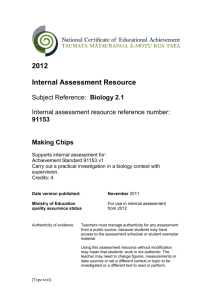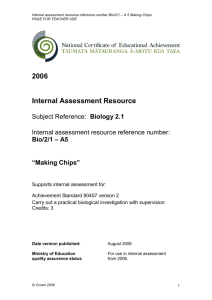Preparation of the Na salts of the sulfonatophenyl porphyrins
advertisement
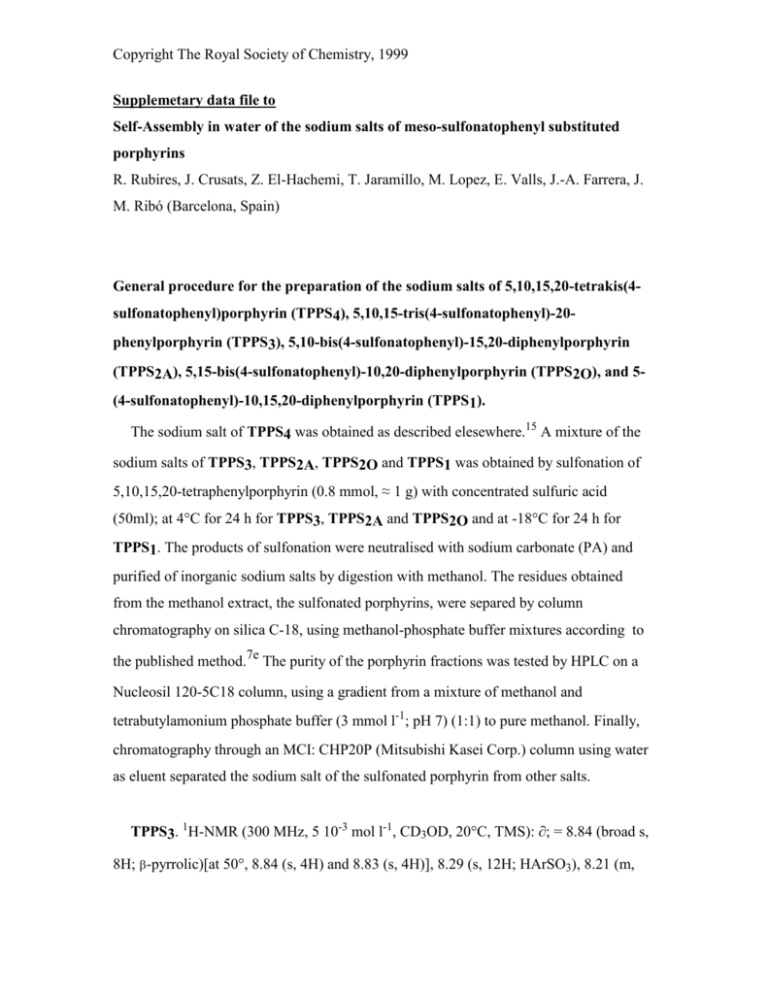
Copyright The Royal Society of Chemistry, 1999 Supplemetary data file to Self-Assembly in water of the sodium salts of meso-sulfonatophenyl substituted porphyrins R. Rubires, J. Crusats, Z. El-Hachemi, T. Jaramillo, M. Lopez, E. Valls, J.-A. Farrera, J. M. Ribó (Barcelona, Spain) General procedure for the preparation of the sodium salts of 5,10,15,20-tetrakis(4sulfonatophenyl)porphyrin (TPPS4), 5,10,15-tris(4-sulfonatophenyl)-20phenylporphyrin (TPPS3), 5,10-bis(4-sulfonatophenyl)-15,20-diphenylporphyrin (TPPS2A), 5,15-bis(4-sulfonatophenyl)-10,20-diphenylporphyrin (TPPS2O), and 5(4-sulfonatophenyl)-10,15,20-diphenylporphyrin (TPPS1). The sodium salt of TPPS4 was obtained as described elesewhere.15 A mixture of the sodium salts of TPPS3, TPPS2A, TPPS2O and TPPS1 was obtained by sulfonation of 5,10,15,20-tetraphenylporphyrin (0.8 mmol, ≈ 1 g) with concentrated sulfuric acid (50ml); at 4°C for 24 h for TPPS3, TPPS2A and TPPS2O and at -18°C for 24 h for TPPS1. The products of sulfonation were neutralised with sodium carbonate (PA) and purified of inorganic sodium salts by digestion with methanol. The residues obtained from the methanol extract, the sulfonated porphyrins, were separed by column chromatography on silica C-18, using methanol-phosphate buffer mixtures according to the published method.7e The purity of the porphyrin fractions was tested by HPLC on a Nucleosil 120-5C18 column, using a gradient from a mixture of methanol and tetrabutylamonium phosphate buffer (3 mmol l-1; pH 7) (1:1) to pure methanol. Finally, chromatography through an MCI: CHP20P (Mitsubishi Kasei Corp.) column using water as eluent separated the sodium salt of the sulfonated porphyrin from other salts. TPPS3. 1H-NMR (300 MHz, 5 10-3 mol l-1, CD3OD, 20°C, TMS): ∂; = 8.84 (broad s, 8H; -pyrrolic)[at 50°, 8.84 (s, 4H) and 8.83 (s, 4H)], 8.29 (s, 12H; HArSO3), 8.21 (m, Copyright The Royal Society of Chemistry, 1999 2H; o-H), 7.84 (m, 3H; m- and p-H); UV/Vis (EtOH): max () = 415 (280000), 511 (10800), 554 (7000), 590 (6200), 646 nm (6700); MS (ES, -: MeOH), m/z: 283 [M3-3Na], 426 [M2-+H-3Na], 854 [M1-+2H-3Na]. TPPS2A. 1H-NMR (300 MHz, 5 10-3 mol l-1, CD3OD, 20°C, TMS): ∂; = 8.83 (broad s, 8H; -pyrrolic), 8.28 (s, 8H; HArSO3) [at 50°, 8.86 (s, 2H), 8.84 (s, 4H) and 8.83 (s, 2H)], 8.18-822 (m, 4H; o-H), 7.76-7.85 (m, 6H; m- and p-H); UV/Vis (EtOH): max () = 415 (250000), 511 (9300), 546 (3300), 589 (2400), 645 nm (1700); MS (ES, -: MeOH), m/z: 386 [M2--2Na], 773 [M-+H-2Na]. TPPS2O. 1H-NMR (300 MHz, 5 10-3 mol l-1, CD3OD, 20°C, TMS): ∂; = 8.83 (broad s, 8H; -pyrrolic) [at 50°, 8.83 (s, 8H)], 8.28 (s, 8H; HArSO3), 8.21-8.30 (m, 8H; o-H), 7.78-7.84 (m, 6H; m- and p-H); UV/Vis (EtOH): max () = 415 (270000), 511 (6000), 545 (2500), 590 (2500), 646 nm (2100); MS (ES, -: MeOH), m/z: 386 [M2--2Na], 773 [M-+H-2Na]. TPPS1. 1H-NMR (300 MHz, 7 10-3 mol l-1, CD3OD, 20°C, TMS): ∂; = 8.85 (broad s, 8H; -pyrrolic) [at 50°, 8.86 (s, 4H) and 8.84 (s, 4H)], 8.28 (s, 4H; HArSO3), 8.21 (m, 6H; o-H), 7.80 (m, 9H; m- and p-H); UV/Vis (EtOH): max () = 414 (378000), 513 (72000), 546 (2500), 589 (2000), 646 nm (1500); MS (ES, -: MeOH:H2O 1:1, m/z: (4 105 mol l-1) 693 [M--Na]: (1 10-3 mol l-1): m/z (%): 1388 (10) [2M--4Na+2H], 693 (100) [M--Na]. 5,15-Bis(4-sulfonatophenyl)porphyrin (DPPS2O). 5,15-diphenylporphine27 (79 mg, 0.17 mmol) was sulfonated with conc. H2SO4 (10 ml) at 100°C for 3 h. After water dilution and neutralization with Na2CO3 and NaHCO3 the non-reacted porphyrin was Copyright The Royal Society of Chemistry, 1999 extracted with CH2Cl2. The aqueous phase was filtered through a nylon membrane of 0.8µm pore diameter. The filter residue was recovered by solubilization with methanol. After separation of salts the crude was purified by reverse phase column chromatography (C18; MeOH:H2O 4:1). 55 mg (0.08 mmol; 48 %). 1 H-NMR (300 MHz, 4 10-3 mol l-1, CD3OD, 25°C, TMS): ∂; = 10.51 (s, 2H; ms-H), 9.56 (d, 3J(H,H) =4.6 Hz, 4H; -pyrrolic), 9.09 (d, 3J(H,H) =4.6 Hz, 4H; -pyrrolic), 8.35 (m, 8H; o- and m-H); UV/Vis (4 10-6 mol l-1 MeOH): max () = 402 (230000), 500, 535, 575, 617 nm; MS (ES, -): m/z: 310 [M2--2Na].

